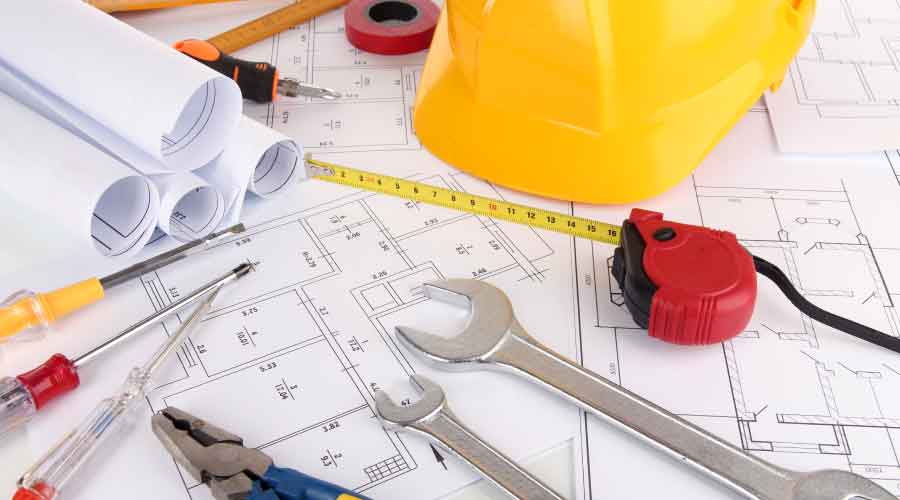Take the Long View on Facilities Maintenance Planning
Being proactive in long-term maintenance planning helps ensure priorities aren’t constantly competing against each other for funding.
By Sal Bagley and Brady Meister, contributing writers
Planning for, and keeping up with, facility maintenance can be complex and time-consuming, especially for owners with large building footprints. There can be competing priorities, including users with strong opinions about what should be addressed, and limited funding to address those priorities. If not properly planned, maintenance requests can feel reactive instead of proactive and strategic.
To improve the effectiveness and efficiency of this process, it’s important to view facilities maintenance planning with a long-range perspective. Step back, assess anticipated needs over the coming years, prioritize the most critical needs and determine the funding choices available to address them.
At its core, the goal of facilities maintenance is to keep the users of buildings comfortable and safe. Being proactive can help ensure facilities remain updated and operational without unplanned or costly interruptions.
Waiting for problems to happen before fixing them is expensive, inefficient, and causes issues, especially today when critical building components or materials may have long lead times. All finishes, components, and systems have a life cycle, and regularly gauging their condition and tracking expected lifetimes helps facility managers stay ahead of challenges and emergencies.
Planning allows facility managers to predictably budget, understand the landscape of needs, and prioritize requests to guide investments. Planning for the long term helps guide short-term decisions and save money on temporary fixes.
How to understand facilities’ needs
It can feel overwhelming to plan for the future, but comprehensive long-term facility maintenance plans should make future issues easier to navigate. Before beginning, consider the plan’s audience. Will it be used internally by your maintenance and operations team or more broadly with users and the public? Is the focus on one facility or multiple? These questions can focus and guide the planning process.
The more comprehensive the study, the more useful it will be in the long run. One effective strategy to manage this process is to break tasks into five major steps:
- Get organized and gather all available information
Gather as much available information as possible. Existing drawings, hazardous materials reports, parking lot or roofing warranty information, OSHA/fire marshal reports and even informal to-do lists compiled by users or the maintenance team tell important parts of the building’s story.
- Involve stakeholders and embrace their feedback
Nobody knows a building better than the people who live and work in and maintain them. Access their knowledge by conducting interviews about the condition of the building and ask about recurring maintenance items, common complaints, and other feedback. Their input will help determine some items that cannot be visually assessed, especially if they are seasonal or appear to be in good working order but are actually a hassle to those who use them every day.
- Make site visits to observe issues in real-time
It’s important for facility managers to go into the field and observe the conditions of their buildings. Age alone does not always indicate when something may fail or require replacement. Valuable insights may also be gained from users or the maintenance team that merit further study.
Comprehensive lists are only possible if comprehensive processes are implemented. Focus site visits by approaching the building in categories: exterior, site, interior, accessibility, mechanical, electrical, and so forth, and track issues by room number. Create a method to evaluate the condition of systems or finishes and take pictures for future reference.
- Summarize findings: Document, document, document!
One of the biggest challenges can be documenting enough information so that others can continue future work. Describe the issue and intended solution. Document quantities, make note of any special considerations or follow-up work required, and include the photos or reference room numbers.
- Assign costs & priorities: Recommend budgets to address issues and evaluate urgency
Once all current and upcoming issues are documented, prioritization is key to creating a successful long-term maintenance plan. It’s imperative to ask: What has to be done? What should be done? What could be done? Issues should be evaluated based on how critical they are and how much longer they are expected to last. Assigning a ranking or categorization helps address facilities issues equitably and avoid the “squeaky wheel getting the grease” approach.
When estimating assigned budgets for issues, make sure to consider total project costs, including soft costs, as well as construction inflation. As the project’s completion date is projected, adjust today’s costs to be successful in future years.
Planning for success
Once the study is complete and needs have been documented, it may be clear which components or systems need to be addressed first based on their ages and condition. However, taking other factors into account is important to optimally package and phase projects.
- What are the lead-up timelines?
Some projects may be as simple as getting quotes for part replacements or components. Other projects are more complex and require finalization of project scope and budget, design timelines, planning for market conditions such as lead times for equipment availability, and pre-construction activities like permitting and materials ordering. Consider when you want to hit the ground running with construction and work backwards to determine start date.
- What can be accomplished at the same time?
Planning for maintenance projects often includes stressful or time-consuming efforts like relocating users. Consider what items can be addressed at the same time to save money, time and create efficiencies. For example, can ceiling/above ceiling work occur at the same time as a major HVAC project? Can you get the best bang for your buck from an efficiency of scale perspective while you have a flooring contractor onsite? Answer this question users may ask: “Why didn’t they do that when they were here before?”
- What can be completed in the allotted time?
There may be constraints on how long users are willing to relocate or be non-operational, and it’s beneficial to determine what can be achieved in the project’s allotted time frame. Take into account any demolition, receipt and installation of new materials, start-up activities, testing, adjusting and balancing (TAB) for HVAC systems, commissioning, and re-occupancy activities during planning.
Spending time to develop a long-range facility maintenance plan benefits the entire organization and can provide focus and clarity for owners and their work. Regularly revisit and update your plan so that it is a living document. Check things off the list when items are complete, rebalance priorities to match available funding and add new items as they arise to ensure operational success long into the future.
Sal Bagley is an educational planner and partner at Wold Architects and Engineers and can be reached at sbagley@woldae.com. Brady Meister is an associate and mechanical engineer at Wold Architects and Engineers and can be reached at bmeister@woldae.com.
Related Topics:












